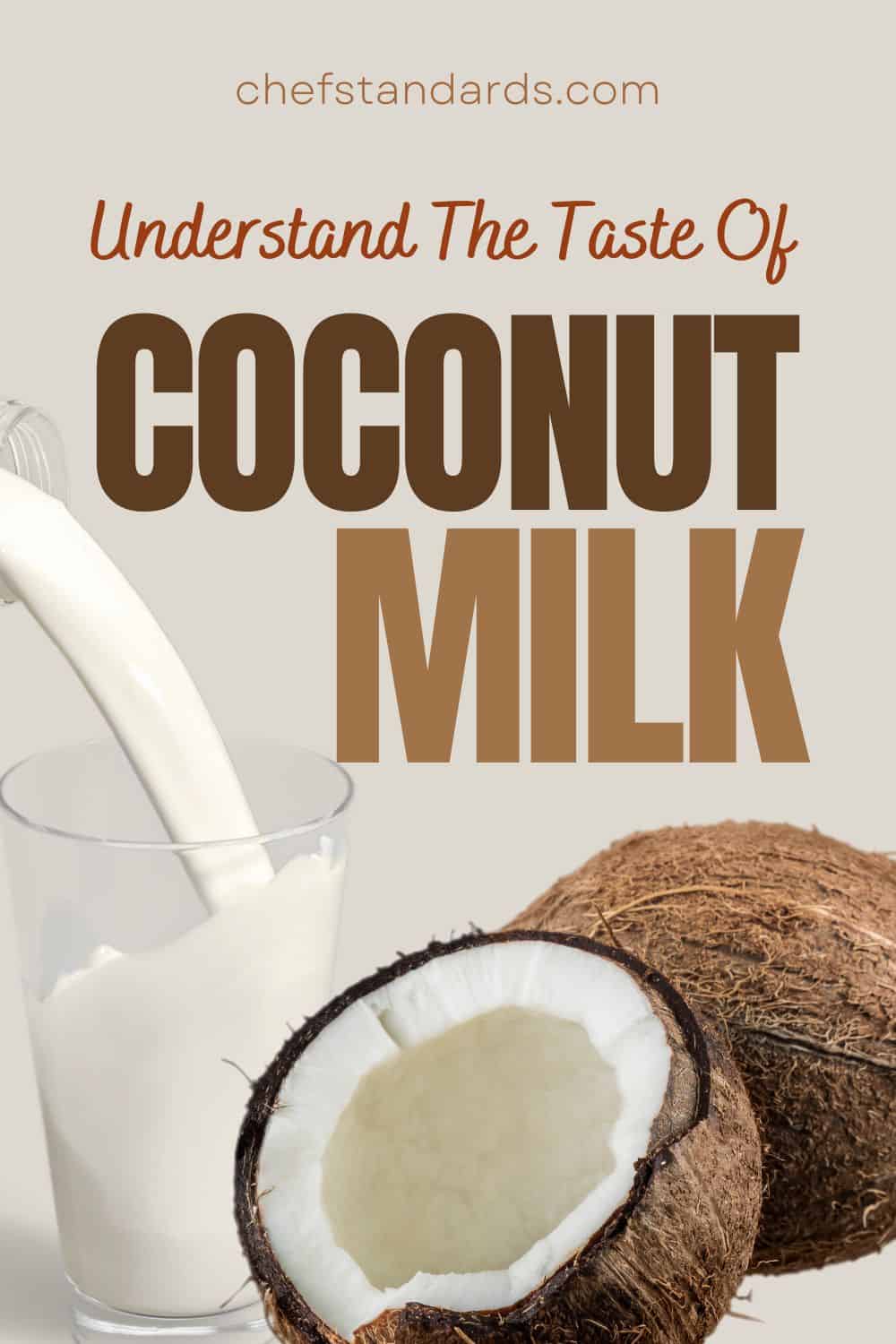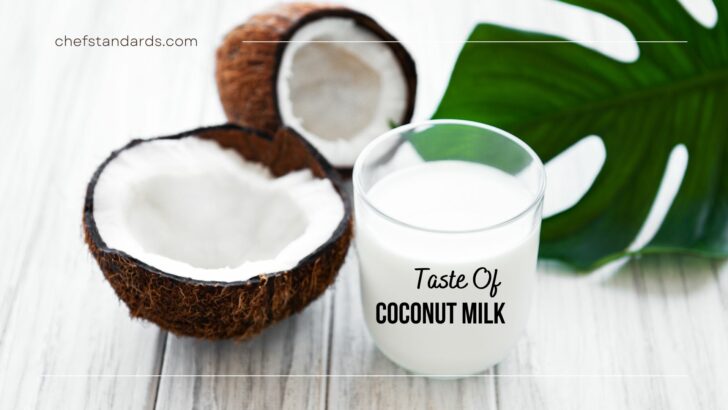No, coconut milk doesn’t taste like coconut but it tastes more like potato. Perhaps this joke wasn’t that funny, but nevertheless, I had to write it.
Here’s the correct answer: Coconut milk tastes like coconut. Now, why does it taste like coconut?
Because coconut milk comes from the meat of the mature coconut. Other coconut variations (coconut water, cream, and oil) have different flavors and some of them taste more like coconut itself, while others don’t.
Today you’ll learn all you need to know about what coconut milk tastes like, how it compares to other coconut variations, and how you can use it in cooking.
What Does Coconut Milk Taste Like?

Generally, coconut milk tastes like coconut because it comes from the mature coconut which has more meat. It has a sweet, rich, and nutty tropical taste with a hint of saltiness. Its tropical flavor profile pairs well with sweet and savory dishes.
If you want a more detailed description of what coconut milk tastes like, then you need to know that there are two types of coconut milk:
• Thick coconut milk: Refers to the grated coconut that is simmered or boiled in water and strained through cheesecloth. Thick coconut milk is creamy and thick. It has the same flavor as coconut.
• Thin coconut milk: The grated coconut in cheesecloth is simmered in water and then strained. This process produces thin coconut milk with less coconut-y flavor.
How Is Coconut Milk Made? (The Traditional Method)
Traditionally, coconut milk is made by grating the meat of a mature coconut. Grated coconut meat is then mixed with hot water and blended together in a food processor.
The liquid is pressed through a cheesecloth to make the first extract known as thick coconut milk. This type of coconut milk is thicker and creamier.
The second type of coconut milk is thin coconut milk which is made by simmering grated coconut in cheesecloth and then straining it. This type of milk is thinner and less creamy.
Coconut Milk Vs. Coconut Cream
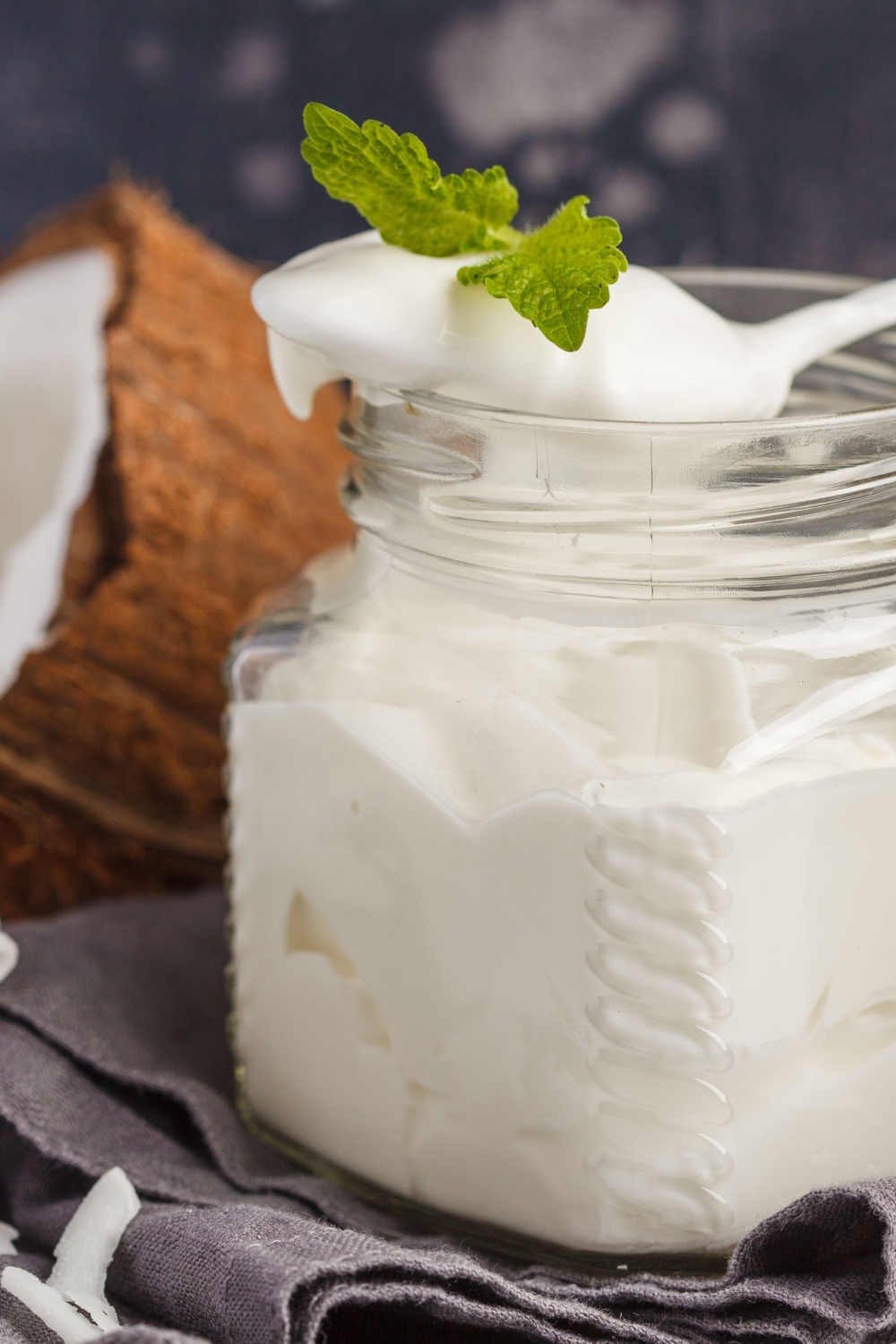
Both coconut milk and coconut cream are made from the meat of coconut that is mixed with water. However, there are still some differences between the two:
• Taste: Coconut cream has an even more distinct coconut flavor because it’s made of more coconut content than coconut milk.
• How they’re made: Both coconut milk and cream are made the same way. The main difference is that coconut cream contains a higher coconut ratio and less water than coconut milk. Coconut milk is usually made of 1 part grated coconut + 2 parts water, while coconut cream is made of 4 parts grated coconut + 1 part water.
• Consistency: Coconut milk is thinner than coconut cream because coconut cream is made of more coconut flesh and a minimum amount of water.
• Uses: Coconut milk is popularly used in Thai curries such as Massaman and Panang curries, soups, and stews.
Contrary to it, coconut cream is mainly used in desserts and ice creams.
Coconut Milk Vs. Coconut Oil
Coconut milk and coconut oil share the same flavor profile but they don’t have the same consistency.
• Taste: Both coconut milk and coconut oil have rich coconut flavors. However, unrefined coconut oil has a stronger coconut flavor than refined coconut oil.
• How they’re made: Coconut milk is made of grated meat of a mature coconut that is mixed with hot water, blended, and strained through cheesecloth. Coconut oil is made by extracting the fats from the meat of a coconut.
• Consistency: Coconut milk is much thicker than coconut oil. Coconut oil has an oily consistency at higher temperatures, and it becomes solid at lower temperatures. The best way to melt coconut oil is by placing the jar in hot water. On the other hand, coconut milk has a creamy and rich consistency regardless of the temperature.
• Uses: Coconut milk is popularly used in Thai curries such as Massaman and Panang curries, soups, and stews. On the other hand, coconut oil is mostly used as a substitute for other oils in baking. It is one of the best vegetable oil substitutes for brownies.
It is also popularly used in pancakes, cakes, and smoothies, as well as for skin, hair, etc.
Coconut Milk Vs. Coconut Water
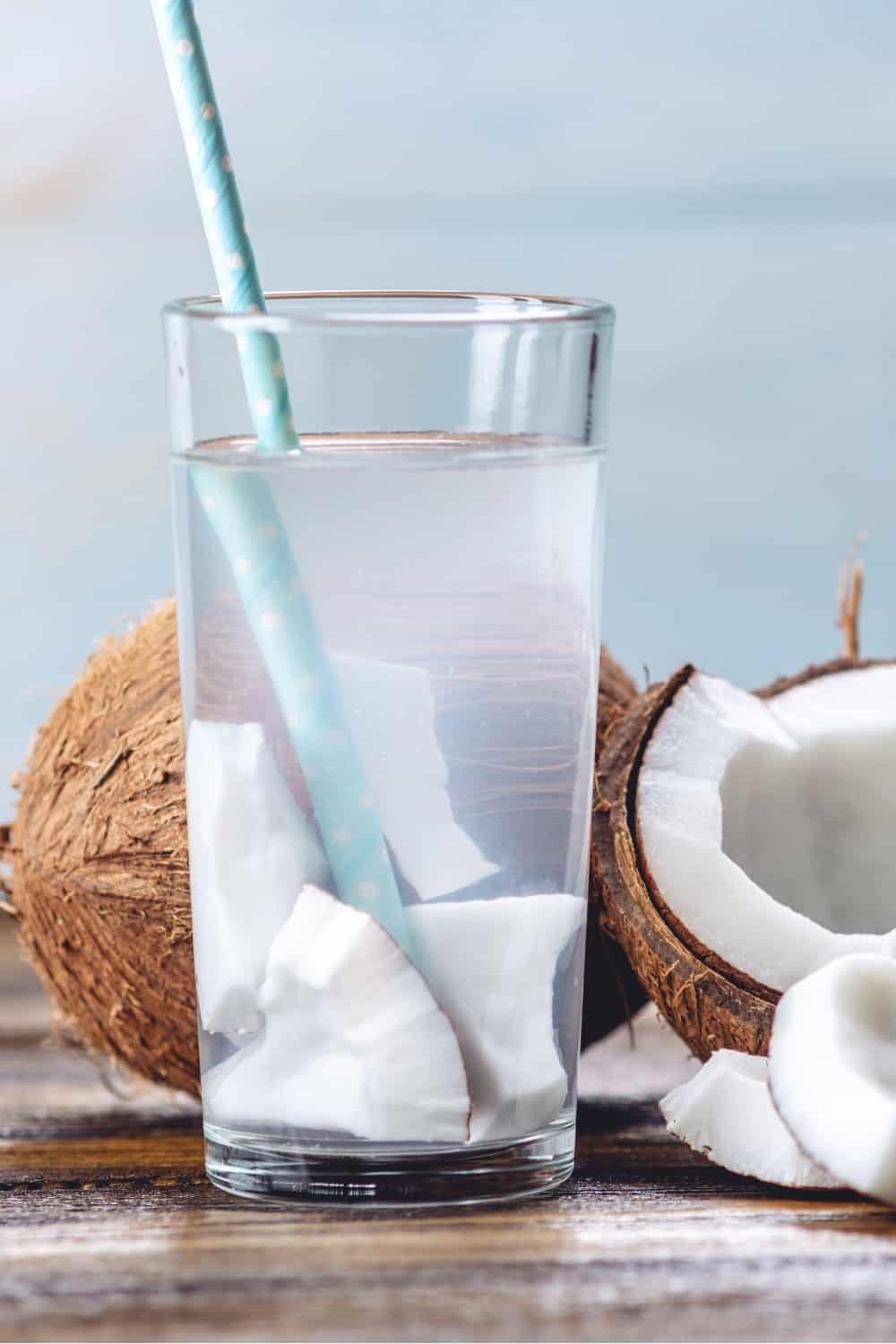
Coconut milk and coconut water are two completely different beverages. Coconut milk is processed, while coconut water is not.
• Taste: Coconut milk has a rich, coconut flavor, while coconut water has a mild taste of coconut.
• How they’re made: Coconut milk is made of grated meat of a mature coconut that is mixed with hot water, blended, and strained through cheesecloth. Contrary to it, coconut water is not processed but it is a sweet, colorless liquid that you can drink straight from young green coconuts.
• Consistency: Coconut milk is much thicker than coconut water. As the name implies, coconut water is water, while coconut milk has a creamy and rich consistency.
• Uses: Coconut milk is popularly used in Thai curries such as Massaman and Panang curries, soups, and stews. On the other hand, coconut water is mostly used as a refreshing drink. You can use it in various cocktail recipes.
3 Recipes With Coconut Milk
If you haven’t used coconut milk in cooking before but you’re willing to try it, here are my three favorite recipes with coconut milk:
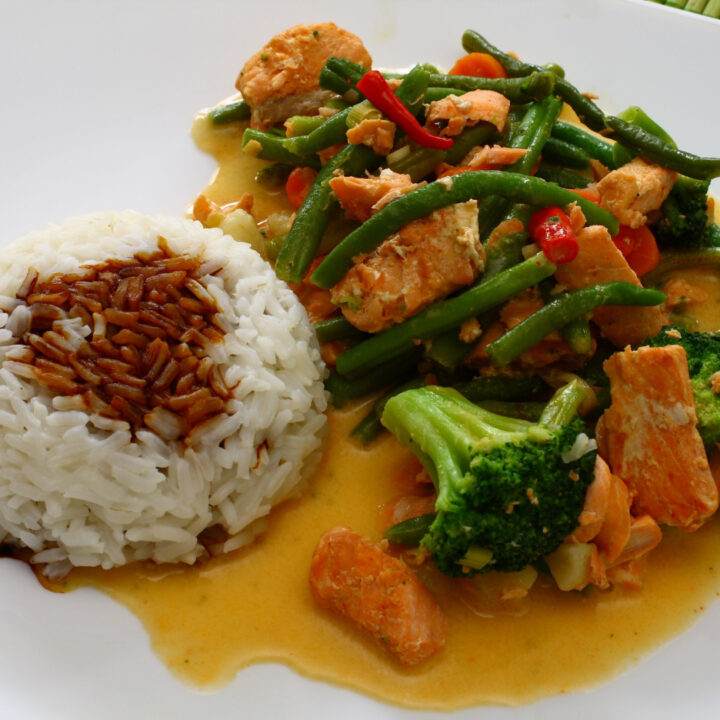
Thai coconut rice with salmon
If you’re a fan of Thai flavors, then you simply have to try this recipe.
Ingredients
- 2 tablespoons olive oil
- 25 g butter
- 2 x 400ml cans coconut milk
- 2 teaspoons sugar
- 1 plump red chili (seeded and finely chopped)
- 4 spring onions
- 4 lime leaves (fresh or freeze-dried)
- 90g jar Thai red curry paste
- 20g pack of fresh coriander
- 3 tablespoons soy sauce
- 2 shallots (finely chopped)
- 6 skinless salmon fillets
- 3 limes
- 500 g basmati rice
- simple green salad (to serve)
Instructions
Step 1: Place coriander leaves and chopped coriander stalks into a bowl. Then add the juice of one lime, and set the bowl aside. Pour both cans of coconut milk into a container. After that, fill one of these empty cans with cold water and then pour it into a container.
Step 2: Add the butter and oil to the pan and heat over low heat. Add the shallots and cook for around 5 minutes. Keep stirring until they become golden brown in color. Then add the curry paste, stir, and continue cooking for 1 more minute.
Step 3: Remove the pan from the heat, add coriander stalks, lime zest, a teaspoon of salt, and rice. Stir thoroughly until combined. Add coconut milk mixture to rice and stir well. Add the lime leaves and let it all simmer for around 5 minutes (uncovered).
Step 4: Place the salmon on top of the rice, cover, and continue simmering on low heat for 15 to 20 minutes until the rice becomes tender.
Step 5: Juice the grated lime and the second lime in a small bowl. Add the sugar and soy sauce to the lime juice and mix well. Slice the spring onions into thin strands and mix them with chili and coriander leaves. The third lime should be cut into six wedges.
Step 6: Once the rice and fish are done, remove the pan from the heat and let it rest for 5 minutes. Here comes the serving part: Scatter ⅓ of the coriander salad over rice and fish in the pan. Place coconut rice on a plate with salmon on top of it. Drizzle coconut rice and salmon with a spoonful of coriander salad and lime dressing. Give every person 1 lime wedge to squeeze over the dish, and serve green salad as a side dish.
Nutrition Information:
Yield: 6 Serving Size: 1Amount Per Serving: Calories: 958Total Fat: 64gSaturated Fat: 33gTrans Fat: 0gUnsaturated Fat: 26gCholesterol: 152mgSodium: 963mgCarbohydrates: 41gFiber: 3gSugar: 5gProtein: 57g
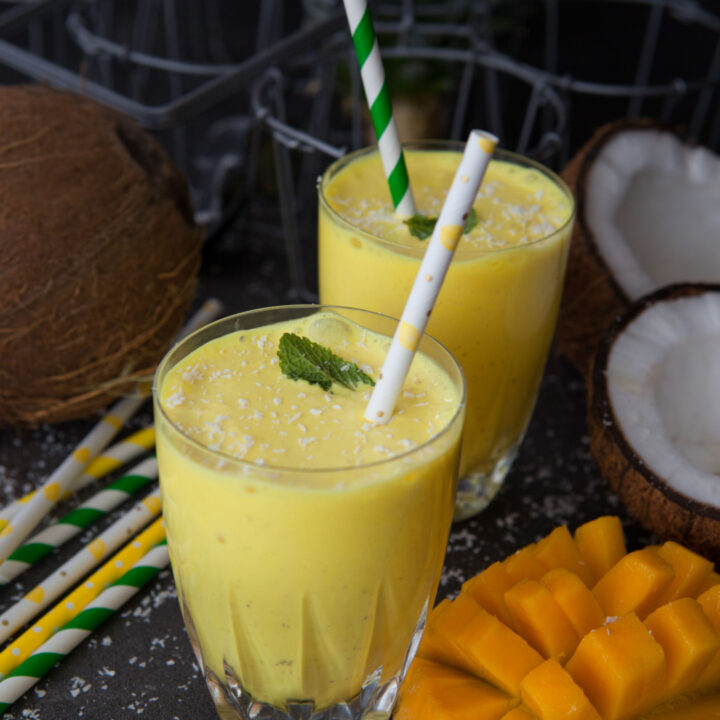
Mango and coconut smoothie
Smoothie with tropical fruit is what motivates me to get up in the morning. It’s nutritious, delicious, and simple to make!
Ingredients
- 1 tablespoon ground flaxseed, sunflower, and pumpkin seed
- 200 ml coconut milk
- 120 g frozen mango chunks
- 4 tablespoons coconut milk yogurt
- 1 banana
- 1 passion fruit (optional)
Instructions
Step 1: Place all of the ingredients into a blender and blend until smooth. Pour the smoothie into a glass (or 2 glasses) and add the seeds of passion fruit on top (optional). Congrats, your mango and coconut smoothie is ready!
Nutrition Information:
Yield: 2 Serving Size: 1Amount Per Serving: Calories: 577Total Fat: 31gSaturated Fat: 21gTrans Fat: 0gUnsaturated Fat: 8gCholesterol: 0mgSodium: 57mgCarbohydrates: 74gFiber: 22gSugar: 31gProtein: 13g
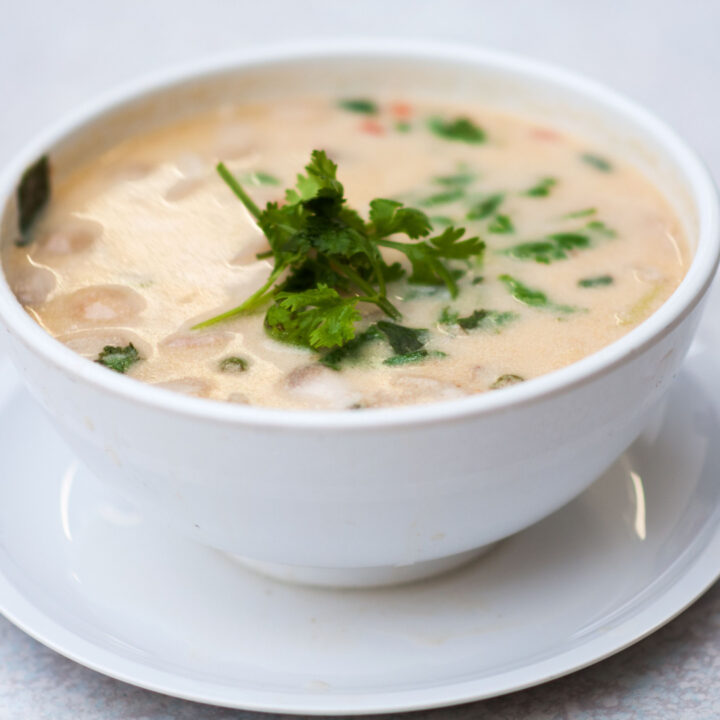
Coconut and bean soup
This coconut and bean soup is one of my favorite vegetarian meals. It’s easy to make and you don’t have to worry about leftovers because I can guarantee you that you’ll eat it all.
Ingredients
- 410g can kidney bean (rinsed and drained)
- 1 vegetable stock cube
- 2 x cans coconut milk
- 1 red pepper (diced)
- 1 Scotch bonnet chili (deseeded and pounded to a paste)
- 1 teaspoon allspice
- 1 garlic clove (chopped)
- 3 plum tomatoes (chopped)
- 410g can black-eyed bean (rinsed and drained)
- 1 tablespoon sunflower oil
- juice 2 limes
- 1 teaspoon dried thyme
- 1 teaspoon medium curry powder
- ½ bunch spring onions (whites and greens separately sliced)
- 410g can pinto bean (rinsed and drained)
Instructions
Step 1: Pour the oil into a large saucepan and heat it. Then add the spring onion whites, chili paste, pepper, and garlic. Cook for 5 to 8 minutes. Then add the curry powder, spices, and the thyme. Cook for another minute, and then add tomatoes. Continue cooking for 2 minutes.
Step 2: Add the crumbled stock cube, pour in the coconut milk, and add all the beans. Stir well and simmer for around 10 minutes. Remove from the heat and add the lime juice, the majority of the spring onion greens, and season to taste. Scatter the remaining spring onion greens on top of the dish as decoration.
Nutrition Information:
Yield: 4 Serving Size: 1Amount Per Serving: Calories: 1150Total Fat: 61gSaturated Fat: 42gTrans Fat: 0gUnsaturated Fat: 12gCholesterol: 759mgSodium: 825mgCarbohydrates: 90gFiber: 22gSugar: 13gProtein: 64g
Summary
Does coconut milk taste like coconut?
Yes, coconut milk tastes like coconut because it comes from the mature coconut which has more meat. Coconut milk has a sweet, rich, and nutty tropical taste with a hint of saltiness.
How is coconut milk made?
Coconut milk is made of grated meat of a mature coconut that is mixed with hot water, blended, and strained through cheesecloth.
What are the two types of coconut milk?
There is a thick and thin type of coconut milk. Thick coconut milk is richer and creamier with enhanced coconut taste, while thin coconut milk is thinner and it has less coconut-y flavor.
How does coconut milk compare to coconut cream, coconut water, and coconut oil?
They are all made of coconuts but in different ways. Coconut milk and coconut cream are made the same way (see the second question) and the only difference is in the coconut-to-water ratio. Coconut cream uses more coconut than water and that’s why it has a strong coconut flavor and creamier texture.
Coconut oil is made by extracting the fats from the meat of a coconut. In terms of flavor, both coconut oil and coconut milk taste like coconut.
Contrary to all of the mentioned coconut variations, coconut water is not processed. It is a sweet, colorless liquid that you can drink straight from young green coconuts.
What are my three favorite recipes with coconut milk?
Thai coconut rice with salmon, mango & coconut smoothie, coconut & bean soup. (See the recipes above.) Bon Appétit!
